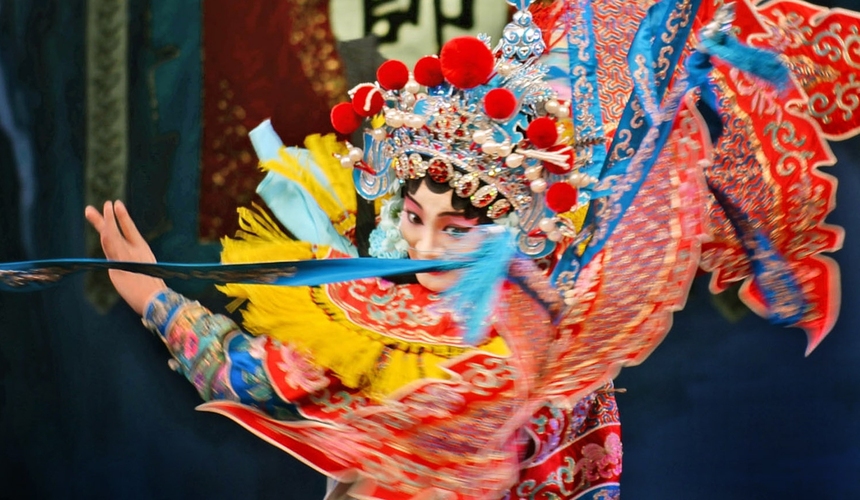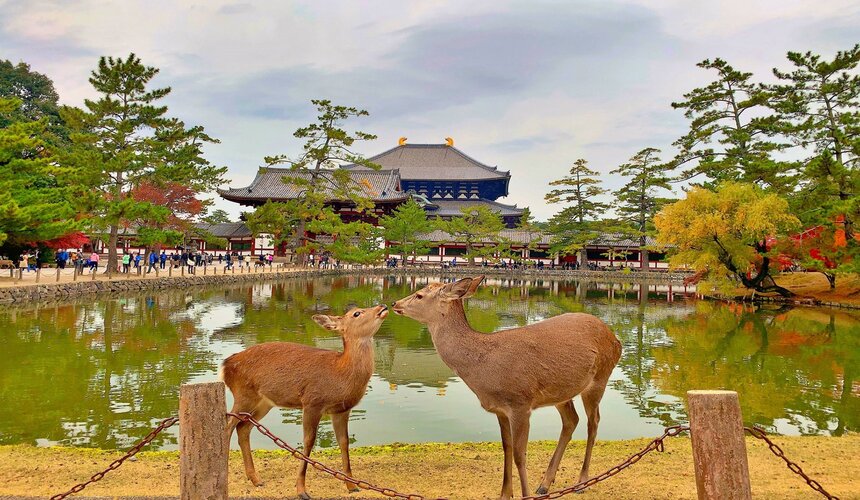
18 China Intangible Cultural Heritage
Intangible Cultural Heritage (ICH) represents the diverse array of traditions, expressions, and practices that communities have inherited from their ancestors and are committed to preserving for future generations. It encompasses a range of elements, including knowledge, skills, rituals, music, dance, language, and other forms of expression. China has been highly proactive in safeguarding these invaluable assets. Keeping scroll down for further information on how you can enhance your tour of China!
Chinese shadow puppetry
Chinese shadow puppetry is a form of theatre comprising colourful silhouette figures made from leather or paper, accompanied by music and singing. The puppets are manipulated by puppeteers using rods, creating the illusion of moving images on a translucent cloth screen illuminated from behind. Many of the more experienced shadow puppetry artists are able to perform a wide range of traditional plays, which are either passed down through oral tradition or found in written form. They possess a range of specialised skills, including improvisational singing, falsetto, simultaneous manipulation of multiple puppets, and the ability to play a variety of musical instruments.

Traditional tea processing techniques
China’s traditional tea processing techniques and associated social practices encompass the knowledge, skills and practices related to tea plantation management, tea-leaf picking, manual processing, drinking and sharing. In accordance with natural conditions and local customs, tea producers have developed six categories of tea: green, yellow, dark, white, oolong and black teas. The addition of reprocessed teas, such as flower-scented teas, results in over 2,000 tea products with a variety of colours, aromas, flavours and shapes. Tea is an integral part of Chinese culture, consumed on a daily basis in a variety of settings, including homes, workplaces, tea houses, restaurants and temples.

Tai Chi
Tai Chi is a traditional physical practice for relaxed, circular movements that work in concert with breath regulation and the cultivation of a righteous and neutral mind. The practice originated in the mid-17th century in Wenxian County, Henan Province, China. It is now practised throughout the country by people of all ages and from a variety of ethnic backgrounds. The fundamental movements of Tai Chi are based on the principles of five steps and eight techniques, encompassing a range of routines, exercises and tuishou (hand-pushing skills performed with a partner). The element has been influenced by Daoist and Confucian thought, as well as traditional Chinese medicine theories, and has developed into several styles named after a clan or a master’s personal name.

Tibetan opera
Tibetan opera is the most popular traditional opera of minority ethnic groups in China. It is a comprehensive art form that combines folk song, dance, storytelling, chant, acrobatics and religious performance. The performance is most popular in the Qinghai-Tibetan Plateau in western China. It begins with a prayer ceremony, including the cleansing of the stage by hunters and blessings by the elder, and concludes with another blessing. The core of the opera is a dramatic narrative delivered by a single narrator and brought to life by a team of singers, dancers, and acrobats. The actors wear traditional masks of a variety of shapes and colours, which contrast with their simple makeup.

Sericulture and silk craftsmanship of China
China’s sericulture and silk craftsmanship have a long and rich history, with roots in the Zhejiang and Jiangsu Provinces. Silk production has traditionally been an important economic activity for women in rural areas. The process involves planting mulberry trees, raising silkworms, unwinding the silk, making thread, and designing and weaving fabric. The life cycle of the silkworm was viewed as an allegorical representation of the human experience, encompassing life, death, and rebirth. The silkworm waste from the ponds is used as fish food, while the mud from the ponds is used as mulberry tree fertiliser, and the mulberry leaves are used as silkworm food.

Guqin and its music
The Chinese zither, known as the guqin, has a history spanning over 3,000 years and represents China’s most esteemed tradition of solo musical performance. As described in early literary sources and corroborated by archaeological finds, this ancient instrument is inextricably linked to Chinese intellectual history. Guqin playing evolved into an exclusive art form, practised by members of the nobility and the intelligentsia in private settings. It was therefore never intended for public performance. In addition, the guqin was one of four core disciplines – along with calligraphy, painting and an ancient form of chess – that Chinese scholars were expected to master. It is traditional that a minimum of twenty years of training is required to attain proficiency.

China engraved block printing technique
The traditional Chinese engraved block printing technique requires the input of half a dozen craftspeople with expertise in printing, dexterity and team spirit. The blocks themselves are crafted from the fine-grained wood of pear or jujube trees, with a thickness of two centimetres, and are then polished with sandpaper in preparation for engraving.

Chinese Zhusuan
Chinese Zhushuan is a traditional method of performing mathematical calculations with an abacus that has been in use for centuries. Practitioners can perform a range of mathematical operations, including addition, subtraction, multiplication, division, exponential multiplication, root and more complicated equations, by moving beads along the abacus rods according to defined formulas. It is believed that training in abacus-based mental arithmetic can enhance a child’s attention span, memory and mental capability.

Chinese paper-cut
Paper-cutting is a popular art form that is present throughout China and practised by various ethnic groups. It is an integral part of everyday life. This practice is predominantly female and is transmitted from mother to daughter over an extended period, beginning in childhood. It is particularly prevalent in rural areas. It commands the respect and admiration of the most skilled artists. A variety of techniques are employed, including cutting or engraving the paper with a chisel, colouring, and leaving certain areas blank.

Traditional Li textile techniques
The Li ethnic group of Hainan Province, China, employs traditional textile techniques, including spinning, dyeing, weaving and embroidering, to produce clothing and other daily necessities from cotton, hemp and other fibres. The techniques involved, including warp ikat, double-face embroidery, and single-face jacquard weaving, are passed down from mothers to daughters from an early age through verbal instruction and personal demonstration. Li women are solely responsible for designing the textile patterns, utilising only their own creativity and knowledge of traditional styles.

Wangchuan Ceremony
The Wangchuan ceremony and related practices have their roots in folk customs that involve worshipping Ong Yah, a deity believed to protect people and their lands from disasters. The ceremony was developed in China’s Minnan region between the fifteenth and seventeenth centuries. The ceremony commences with the gathering of individuals at the seaside to welcome Ong Yah to temples or clan halls. At this time, lamp poles are erected to summon ‘good brothers’ and deliver them from torment. In this way, the element has been celebrated as a means of doing good deeds. The procession is led by performances which clear a path for Ong Yah’s barge (which may be made of wood or paper).

Regong arts
In monasteries and villages along the Longwu River basin in Qinghai Province in western China, Buddhist monks and folk artists of the Tibetan and Tu ethnicity continue the traditional artistic practices of painting thangka and murals, crafting patchwork barbola and sculpting, collectively known as the Regong arts. Thangka is the art of painting religious scrolls used to venerate Buddha. It employs a special brush to apply natural dyes to cloth prepared with patterns sketched in charcoal. Barbola is a technique that uses plant and animal forms cut from silk fabric to create soft relief art for veils and column ornaments. Wood, clay, stone or brick Regong sculpture is used to decorate rafters, wall panels, tea tables and cabinets in both temples and homes.

Grand song of the Dong ethnic group
A popular saying among the Dong people in Guizhou Province in southern China is that ‘rice nourishes the body and songs nourish the soul’. The Dong ethnic group exemplifies a tradition of passing on culture and knowledge in music through the Grand Song, a multi-part singing performance without instrumental accompaniment or a leader. The repertoire encompasses a diverse range of musical styles, including ballads, children’s songs, songs of greeting. Imitative songs that challenge performers’ technical abilities, particularly in mimicking the sounds of animals.

Dragon Boat festival
The Dragon Boat Festival is celebrated by people of several ethnic groups throughout China. The festival begins on the fifth day of the fifth lunar month. While the specific celebrations may vary from region to region, there are several common features. A memorial ceremony offering sacrifices to a local hero is combined with sporting events such as dragon races, dragon boating and willow shooting; feasts of rice dumplings, eggs and ruby sulphur wine; and folk entertainments including opera, song and unicorn dances.

Chinese calligraphy
Chinese calligraphy is a discipline that encompasses more than mere communication. It also incorporates artistic elements. Calligraphers employ their brushes to inscribe five distinct styles of script, namely ‘seal’, ‘official’, ‘cursive’, ‘running’ and ‘regular’. The art may be found on any writing surface, including the rocky walls of cliffs. However, it is particularly prevalent on letters, scrolls, works of literature and fan coverings.

Acupuncture and moxibustion of traditional Chinese medicine
Acupuncture and moxibustion are forms of traditional Chinese medicine that are widely practised in China. The theories of acupuncture and moxibustion posit that the human body functions as a miniature ecosystem, comprising interconnected channels. By stimulating these channels, practitioners aim to enhance the body’s self-regulating functions and promote overall health.

Traditional design and practices for building Chinese wooden arch bridges
Wooden arch bridges are located in Fujian and Zhejiang provinces, situated along China’s south-eastern coast. The traditional design and construction techniques employed in the building of these bridges combine the use of wood, traditional architectural tools, craftsmanship, the core technologies of ‘beam-weaving’ and mortise and tenon joints, and an experienced woodworker’s understanding of different environments and the necessary structural mechanics.

Chinese traditional architectural craftsmanship for timber-framed structures
Timber-framed structures are a distinctive feature of Chinese architectural culture, with examples found throughout the country. The wooden components, including columns, beams, purlins, lintels and brackets, are connected by tenon joints in a flexible and earthquake-resistant manner. The frames are remarkably strong and can be installed rapidly on-site by assembling components manufactured in advance. In addition to this, the architectural craft encompasses a range of other skills, including decorative woodworking, tile roofing, stonework, decorative painting and other arts, which are passed down from masters to apprentices through verbal and practical instruction.

In addition to the World Heritage Sites, there are numerous other opportunities to explore China’s Intangible Cultural Heritage. We would like to suggest that you consider including some of these activities in your itinerary during your stay in China. Should you have any travel requests, please do not hesitate to contact our travel consultant, we will be happy to assist you.



